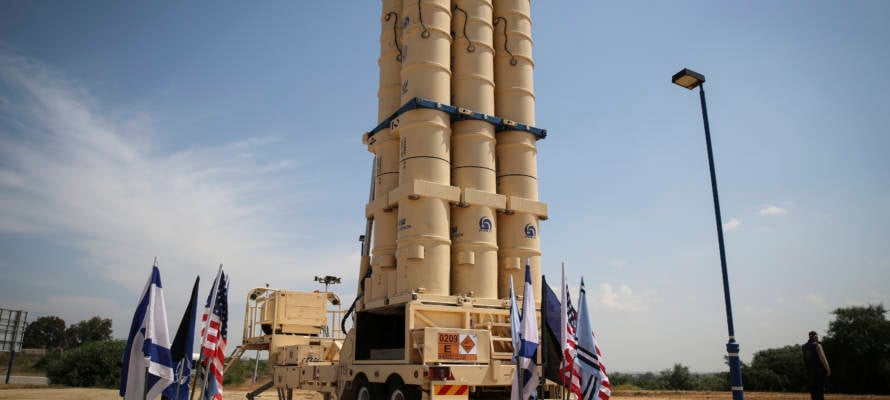The Arrow 2 and 3 interceptor missiles alone cost about $3.5 million apiece.
By Batya Jerenberg, World Israel News
Israel’s massive success at intercepting over 300 missiles and UAVs launched by Iran Saturday night is estimated to have cost the Jewish state well over a billion dollars, according to the estimate of one expert in a Ynet report.
“[Our] defense cost on the order of 4-5 billion shekels [$1.07 billion – $1.34 billion] tonight,” Brig. Gen. (res.) Re’em Aminoach, told the news site Sunday.
Aminoach was appointed economic advisor to current minister in the War Cabinet Benny Gantz when he was the IDF’s chief of staff in 2011, and simultaneously served as the head of the budget department at the Defense Ministry.
The Arrow 2 and 3 interceptors of ballistic missiles cost about $3.5 million apiece, he said.
As it was reported that Iran launched some 120 of these at the Jewish state, this would mean at least $420 million (nearly 1.6 billion shekels) was spent on this part of the protection alone.
This is only if one Arrow was launched for each ballistic missile. Israeli units usually fire two Iron Dome interceptors when shooting down the short-range missiles of Hezbollah and Hamas, to better ensure a hit.
Iran also launched about 170 explosive drones and 30 cruise missiles during the attack.
“Cruise missiles need to be downed by other missiles,” Aminoach said, listing Israel’s ground-based David’s Sling system as the one used in the early hours of Sunday morning. Each one of the David’s Sling interceptors costs a million dollars, he explained.
As for the UAVs, “we hit [them] mainly by using planes,” he noted, referring to the use of hundreds of air-to-air missiles. “Put that all together,” he said, “and that’s the size of the bill.”
“I’m just talking about the cost of downing what [the Iranians] had” in their attack, Aminoach pointed out. “I’m not talking at all about any other kinds of damage, that in this case were insignificant.”
Only one missile got through the defensive array, causing slight damage to an airforce base in the Negev. In addition, the detritus of a missile interceptor injured a Bedouin child when it fell.
The price was reduced perhaps to a small extent by Israeli allies such as the United States, Great Britain, and France joining in Israel’s defense and downing “many dozens” of missiles, as U.S. government officials noted, either via their own jet fighters or by launching interceptors from destroyers at sea.
Even Jordan’s air force took down a few projectiles over its territory, although it claimed to having done so not to help Israel but because the missiles represented a threat to their own country.
Meanwhile, Aminoach estimated the cost of the night’s work to Iran at “less than ten percent” of what it cost Israel to stop them.
He stressed the immediate need to multiply the Defense Ministry budget by several orders of magnitude.
“If you take into account that … in another year or two, three, four, five, they could be in a situation where they can carry out 40 or 50 attacks like these… you begin to understand the amount [of missiles] we need,” he said.
“The net defense budget in 2023 was 60 billion shekels. With less than double that, we don’t have a chance of possessing the required amounts,” he concluded.
Such a “permanent increase” in the budget would be greater than 3% of Israel’s GDP, said former chief economist of the Finance Ministry, Yoel Naveh, in response on the same show.
“This would have very significant consequences for Israel’s economy,” he said. Such an additional burden over the long term, he added, “could negatively affect our potential for growth.”
